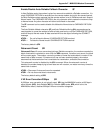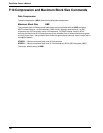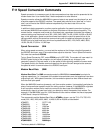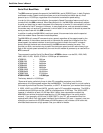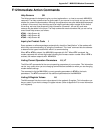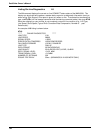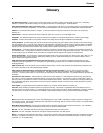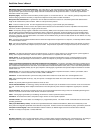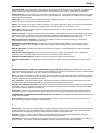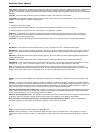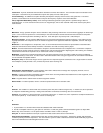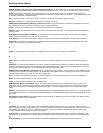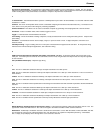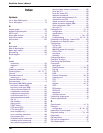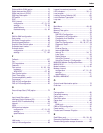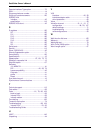
148
DataTalker Owner’s Manual
Flow control: The process of regulating the speed at which data enters or leaves a serial port. Software flow control is implemented by
communications software or by the user sending predefined characters or packets which are recognized as "pause" and "resume"
indicators. Hardware flow control is achieved by using the RTS (request to send) and the CTS (clear to send) control lines of the RS232
interface.
Footprint: The desk or floor surface that a piece of hardware occupies. Also referred to as "real estate".
Foreground: The application program currently running on and in control of the PC screen and keyboard. The area of the screen that
occupies the active window. Compare with background.
Format:
1. The way text is set up on a page.
2. To prepare a disk for holding information. Formatting a disk can delete all information that was previously on it.
3. The way information is structured in a file, often specific to one application or protocol.
Frequency: A characteristic of an electrical or electronic signal which describes the periodic recurrence of cycles. Frequency is
inversely proportional to the wavelength or pulse width of the signal (i.e., long wavelength signals have low frequencies and short
wavelength signals yield high frequencies).
Full-duplex: A method of transmitting and receiving data simultaneously over a single pair of wires. Compare with Half-Duplex.
H
Half-Duplex: The transmission of data in both directions, but only one direction at a time. Compare with Full-Duplex.
Handshaking: A process that two modems go through at the time of call setup to establish synchronization over the data communica-
tions link. It is a synchronization and negotiation process accomplished by the exchange of predefined, mutually recognized control
codes.
Hard Disk: A metal disk covered with magnetic recording material. Some can hold up to several hundred megabytes of information.
Contrast with floppy disk.
Hardware: The equipment that makes up your computer system, including the keyboard, mouse, disk drives and monitor.
Hexadecimal: A base 16 numbering system used to represent binary values. Hex uses the numbers 0-9 and the letters A-F: usually
notated by an "h" (e.g., "4CF h", read "four charley fox, hex"). The result is that one hex digit represents a 4-bit value.
Host: The computer that is designated as retaining information or processing power to service the needs of other computers or
terminals. Mainframes and mid-range computers are hosts; however, with today's powerful microprocessors, PCs can also be config-
ured to serve as hosts. Often, a PC on a LAN will be set up as a host to provide LAN access for remote users.
I
Initialize: To start anew and establish start-up parameters, typically involves clearing all or some part of the device's memory or disk
space.
Interface: A common meeting ground supplied by hardware or software to facilitate a compatible connection and operation between
two devices or programs. For example, when two PCs are connected, they use a common interface across the physical connectors, so
that the signals being sent and received are accurately interpreted. With software, an interface is a module created to be "written to".
That is, if two programs are written to the same interface, then they can be successfully linked together.
International Telecommunications Union (ITU): An advisory committee created and controlled by the United Nations and headquar-
tered in Geneva whose purpose is to develop and to publish recommendations for worldwide standardization of telecommunications
devices. Its standards bureau, ITU-T, was formerly known as the CCITT.
IRQ Level (Interrupt Request Level): The notification a processor receives when another portion of the computer's hardware requires
its attention. IRQs are numbered so that the device issuing the IRQ can be identified, and so IRQs can be prioritized.
ITU-T (International Telecommunications Union - Telecommunications Standardization Sector): The primary international
standards organization for wired public communications networks, formerly known as the CCITT.
K
Kilobit: One thousand bits. A unit of measure for digital data rates.
Kilobyte: One thousand bytes. A unit of measure for digital data rates. Not to be confused with "K", which stands for z
10
bytes of
storage space, either in memory or on disk. 1K of disk space is actually 1024 bytes, 16K is 65,536 bytes and 1M (meg) is 1,048,576
bytes.



